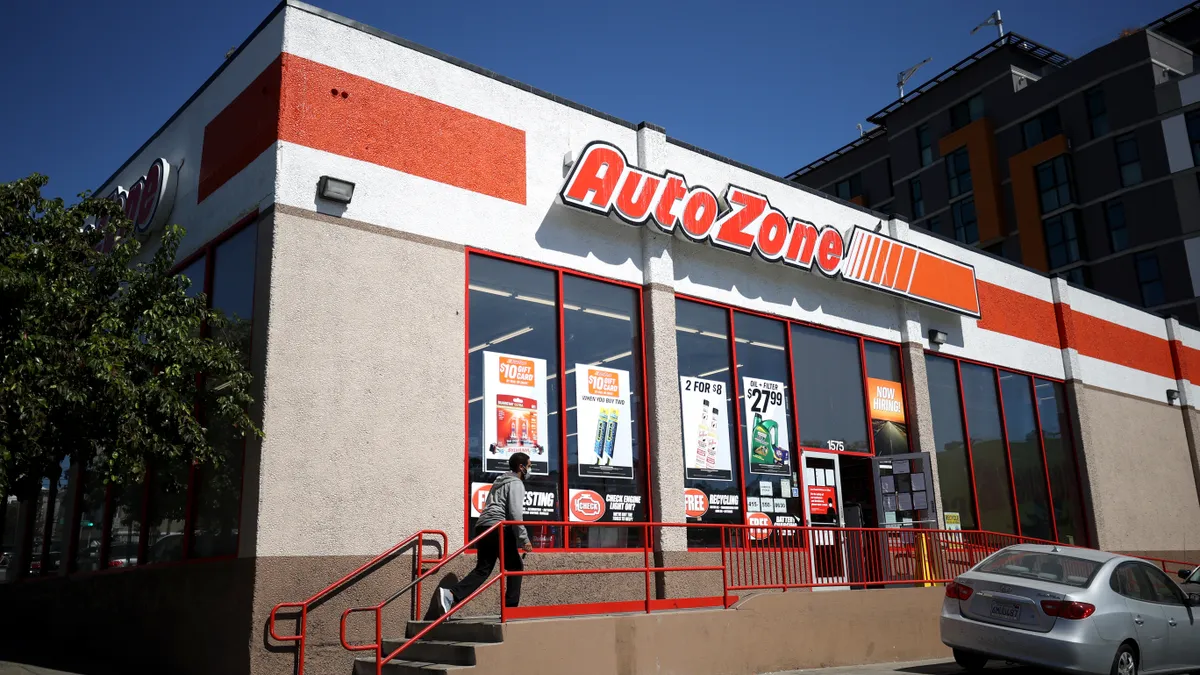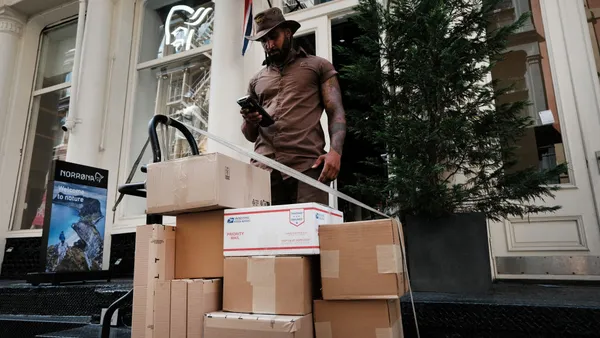Dive Brief:
- AutoZone plans to add 20 mega hubs to its distribution network within the next 12 months due to the success of its inventory replenishment model, CFO Jamere Jackson said on AutoZone's Q4 earnings call.
- A mega hub is an AutoZone store that carries up to 110,000 SKUs and helps fulfill orders for nearby stores and customers within 24 hours, according to SEC filings.
- Jackson said AutoZone currently has 58 mega hubs in its network, but its goal is to have more than 100. "Our mega hub strategy has given us tremendous momentum, and we are doubling down," Jackson said.
Dive Insight:
Having the right SKU in the right place at the right time is a perennial inventory problem for retailers. Solving it often requires investments in more distribution centers to increase fulfillment speed or reach.
But AutoZone's strategy focuses more on building out its store network for replenishment.
The auto parts retailer has spent decades expanding the inventory assortments at select stores, which it has called "hubs" in 10-K filings since at least 2001. These hubs act as mini distribution centers, delivering fast-selling SKUs to stores within its network on a same-day basis, and slower-selling units overnight.
The hub strategy allowed AutoZone to "add millions of dollars in new parts," according to the retailer's 2012 10-K. Over time, AutoZone expanded the concept by setting up "mega hubs," which can carry anywhere from 70,000 SKUs to 110,000 SKUs. The first mega hubs were created in 2013, as part of "strategic tests" evaluating whether raising inventory, product availability or the frequency of store deliveries would bolster sales.
"Our tests were concluded during fiscal 2015, and both initiatives [on delivery frequency and product assortments] were expanded to additional locations in fiscal 2016," AutoZone wrote in its 2016 10-K.
Today, AutoZone's distribution centers include mega hubs, smaller stores, store hubs and distribution centers — all forming a network that puts the retailer in proximity to consumers to improve stock and delivery times.
AutoZone grows its store and hub network
The popularity of stores as fulfillment centers has grown over the years, as shoppers have demanded additional options for their online purchases.
Whether it is curbside pickup, direct delivery, or buy online, pick up in store, retailers are increasingly relying on their store footprint to solve fulfillment challenges. Target, for example, uses its stores to send items to sortation centers, where orders are then divided for last-mile delivery. And Best Buy used some of its store footprint in 2020 to ship orders from stores.
The trend has accelerated such that research from Edge by Ascential suggests retailers may use up to a third of their store footprint for online order fulfillment over time.
"The store network will become an increasingly vital part of last-mile fulfilment," David Gordon, director of omnichannel insights at Edge Retail Insight, said in a July statement to Retail Dive.














